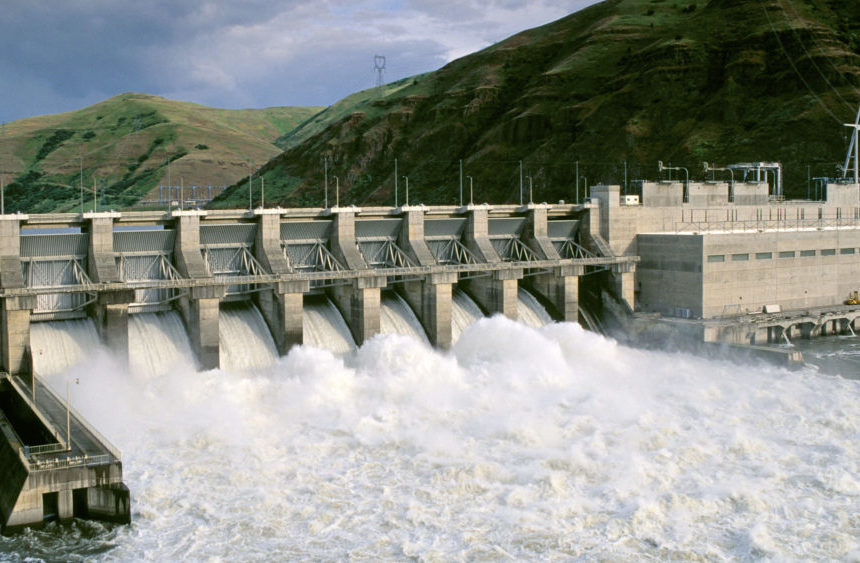Nuclear power and hydropower have provided America with clean power for generations and provide two-thirds of America’s clean power today. Recent technological and policy developments can help them provide even more electricity for decades to come, and if lawmakers want to grow America’s clean energy production, they can’t afford to overlook this opportunity.
Fortunately, several recent policy and market developments focused on nuclear power and hydropower can help lead the way to their overdue resurgence.
>>>READ: West Virginia is Opening the Door to the Next Generation of Nuclear Energy
Nuclear power accounts for 50% of America’s clean electricity and is essential for any vision of an emissions-free power sector. Its “baseload” capabilities and scalable nature mean it can consistently generate large amounts of reliable electricity. Plus, advances in nuclear engineering are making the next generation of nuclear power even more appealing for clean energy generation. Small modular nuclear reactors (SMRs) are smaller, cheaper, and more operationally flexible than traditional large nuclear power plants; this technological innovation is catching the attention of legislators around the country. Several states have recently taken steps to bring more nuclear power online. A natural fit for new nuclear plants is for them to replace existing aging coal plants, and across the nation, America’s coal capitals are looking to do just that.
West Virginia recently repealed its quarter-century-old ban on nuclear power, opening the door for nuclear power in the most coal-reliant state in the country. Wyoming is killing two birds with one stone by placing SMRs in old coal towns to boost formerly coal-dependent local economies and clean up the power sector. Montana, which repealed its nuclear ban last year, is similarly considering retrofitting old coal plants for SMR deployment, and Idaho is currently building an SMR.
A bill in Indiana to allow utilities to install SMRs has already passed the state Senate, and a bill moving through the Missouri House would clear a path to more nuclear power in that state.
Hydropower has also recently drawn high-level legislative attention. Hydropower generates 18% of America’s clean power and is the second-largest source of renewable energy behind wind. Despite this, only 3% of dams in the U.S. generate electricity, and many of those that do have operating licenses that expire shortly. Maddeningly, the permitting process for relicensing these dams takes nearly eight years — longer than relicensing a nuclear power plant or licensing a new hydropower plant from scratch. Policymakers must fix this to keep and grow America’s clean energy options.
Fortunately, Senate energy policy leaders are recognizing this gap and moving to streamline the permitting process. There is plenty of private capital looking to capitalize on untapped hydropower opportunities, and getting the process down to even two years can lure investment into action. The opportunities are enormous. Even outfitting the top 100 eligible dams (out of over 80,000 total) with power generation capabilities can boost total hydropower output by 10%.
>>>READ: Nuclear Power’s Role in a Cleaner, Greener Energy Future
Hydropower is also particularly important for integrating other renewable energy sources, as its output can be adjusted quickly to compensate for sudden changes in renewable generation. In particular, research has shown that hydropower naturally complements wind energy, and by providing a flexible backup source, can raise the value of each energy source when used together. Hydropower also punches above its weight for other grid-related services, such as stabilizing the grid’s voltage and frequency when electricity comes on or offline rapidly. This attribute has proved crucial in Western states during extreme weather conditions over the past few years. As more wind and solar power comes online, we should be pursuing more hydropower to complement and stabilize those energy sources.
Both nuclear power and hydropower have generated clean electricity for decades and their dependable, around-the-clock, and flexible generation can’t be overlooked. As policymakers look to scale up America’s clean energy portfolio, they’d do well not to leave the country’s oldest, largest, and most reliable sources of emissions-free power in the dark.
Jakob Puckett is an energy policy analyst and a Young Voices contributor. Follow him on Twitter @jakobrpuckett.
The views and opinions expressed are those of the author’s and do not necessarily reflect the official policy or position of C3.
